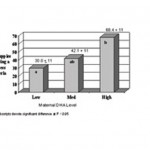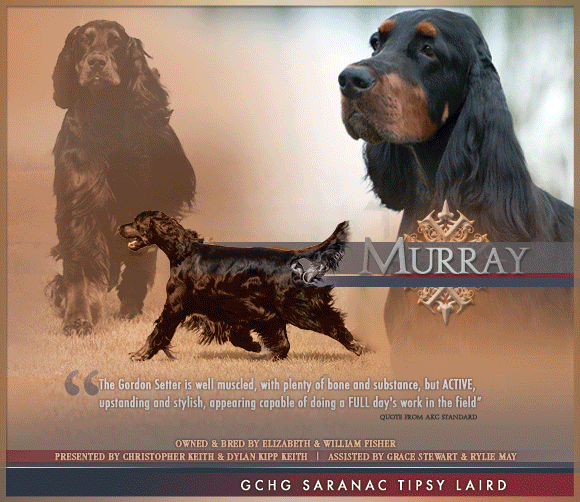Success Depends on What You Know

From the archives of The Canine Chronicle July, 2012
by Dr. Carmen L. Battaglia
ABSTRACT
History is full of examples that demonstrate the importance of early life. Most focused on the kinds of experiences thought to affect early behavior and influence later development. The first year of life for a canine can be divided into three important time sensitive periods that overlap each other. The first is called the Neonatal or Primary Period (3–16 days). The second is called the Period of Socialization (4–14 weeks). The third is called the Enrichment Period (14 weeks–52 weeks). When combined they can produce amazing dogs. In humans the important period in early life is longer. It begins at birth and lasts through high school. Regardless of the species, early life experiences are known to influence later adult behavior. A review of the literature uncovers some interesting facts about these early experiences and the importance of the maternal influence.
EARLY LIFE
Some of the first to investigate the importance of early life were: Dunbar, Pfaffenberger, Scott, Fuller and Fox. Dunbar (1985) reported that newborn puppies were able to respond/reflex to certain stimuli with limited motor capacities and live in a “sensory void” but are responsive to touch and movement. Pfaffenberger (1963) reported that puppies start to learn at three weeks of age and “from seven weeks to sixteen weeks they are going to learn the things which will make their character as adults”. Scott and Fuller (1965) at Bar Harbor, Maine, described early life as a “critical” period and called it “a special time in life when a small amount of experience will produce a great effect on later behavior” (p. 117). They concluded that the effects of these experiences are inversely proportional to age, i.e. the younger the animal the greater the effect. Fox (1971) showed that pups and kittens, when exposed to early stimulating exercises, matured at faster rates when measured by ectroencephalographic changes. He found that they performed better in certain problem- solving tests than non-stimulated littermates. Strandberg et al. (2005) studied German Shepherd dogs and tested four broad behavioral traits to determine if there was a maternal and or litter influence on: playfulness, chase-proneness, cupidity/fearfulness and aggression. They concluded that the dam had little influence on her pups, either genetically or environmentally but littermates seem to have a major influence on the development of these four traits.
Fox (1972) showed that pups not socialized or given opportunities to explore and learn in areas away from their kennel, when given free choice, prefer to stay in their kennels, while other littermates who were given only small amounts of outside stimulation between five and eight weeks of age became inquisitive and very active. Fox also noted that when kennel doors were left open, the pups exposed to outside influences came bounding out, while littermates who were not exposed to new and different experiences remained behind. Non-stimulated pups would typically be fearful of unfamiliar objects and generally preferred to withdraw rather than investigate. He noted that even the well-bred pups of superior pedigrees would not explore or leave their kennels and many were found difficult to train as adults. Those not exposed to new and different experiences acted as if they had become institutionalized, preferring the routine and safe environment of their kennel to the stimulating world outside their immediate place of residence.
Thomson (1957), Hart and Hart (1985), found that the behavior of both dogs and rodents might be affected by factors as early as in the uterus. Using rodents, they found that the nervous system of the fetus was sensitive to hormones through the placenta and that such hormonal influence can affect future behavior. Experiments with rats also showed that postnatal oxytocin treatment and stroking can result in lowering their blood pressure (Holst et al., 2002). Given these findings, it is not unreasonable then to expect that similar effects might exist in dogs as early as in the uterus.

Kelley and Hoffman (2004) found that nutrition fed to the dam and her fetus during gestation coupled with the nutrition fed to her new born pups up to 14 weeks could improve learning. Using three colonies (“a”, “ab”, “b”), they tested the effects of varying the daily amount of DHA which was fed each colony of dams during the gestation period and then the amount of DHA fed their pups up to 14 weeks of age. The amount was varied by colony (low, medium, high). At 14 weeks of age the three colonies of pups were tested using an object recognition test. The differences between each colony and their trainability (performance) are shown in Figure 1.

The published results show a statistically significant advantage to the pups from colony “b” that were fed an enhanced level of DHA. As noted in Figure 1, these data show that performance can be improved through the early use of DHA as a food supplement.
STIMULATION AND EXPOSURE
Enhancing a puppy’s development in other ways has also been achieved through other methods. Battaglia (2009) reviewed the literature and reported on the use of early neurological stimulation and the use of early social experiences to improve performance. His review focused on the first year of life and showed that this time frame could be divided into three important time sensitive periods (Table 1). These three periods overlap each other and serve as a pathway to improving performance. He also noted the importance of the dam and her role during the primary period when the newborn canine is immature and unable to survive without her supervision and constant stimulation. A pup’s basic body functions such as digestion, urination, and defecation depend on her interaction and stimulation during the first four weeks of age.
TABLE 1. TIME PERIODS OF DEVELOPMENT
Primary Birth to 3 weeks
Socialization Four weeks to 14 weeks
Enrichment Fifteen weeks to one year
Studies by Fox, Scott, Fuller, Dunbar and others show that small amounts of stimulation and stress during the Primary period and during Socialization can produce beneficial results. They noted that improperly socialized pups often develop into older individuals unprepared for adult life and unable to cope with its many challenges. Attempts to re-socialize them as adults often produce only small gains. These failures suggest that the window of opportunity for neurological and social stimulation may only come once after which little or nothing can be done to overcome the negative effects of too much or too little stimulation. Denenberg (1964) noted that early experiences can adversely affect learning and must be used with caution (i.e. too much stress can cause pathologic adversities rather than physical or psychological superiority). The danger seems to be in not knowing where the thresholds are for over and under- stimulation.
Gazzano (2007) studied the effects of early gentling in order to test the emotional stability of puppies. Forty-three dogs (16 females and 27 males) from seven litters were divided into two groups. Half of each litter was gently handled daily from the third day postpartum until the twenty-first day. One group was raised in a professional breeding kennel; the others lived with their owners in a family atmosphere. To assess their emotional stability, an isolation test was followed by an arena test when the pups reached 8 weeks of age. Video recordings of the tests allowed for the measurement of vocalization and exploratory activity. Data were analyzed using the Newmann–Keuls’ test which compared non-handled puppies raised with a family and handled puppies raised with a family. There was a statistically significant difference between handled and non-handled pups from breeding kennels, with handled puppies showing lower levels of reactivity. In both environments, the handled puppies were calmer. These results suggest that environmental factors early in life can influence the emotional stability of puppies.
Because many dog owners have busy lifestyles with long and tiring workdays their pets are often left alone and at times neglected. Those left to themselves with only an occasional trip out of the house or off of the property and those who seldom see other canines or strangers often times develop differently. Many suffer from a lack of exposure, stimulation and/or socialization. The side effects of their loneliness and boredom manifest in the form of chewing, digging and hard-to-control behavior (Battaglia, 1958).

MATERNAL INFLUENCE AND EARLY SEPARATION
Since most puppies live together with their mother and siblings for the first eight weeks of life they also begin to develop some of their adult behavior (Scott and Fuller, 1965; Case, 1999). One might conclude that the relationship a pup has with its mother and its siblings (litter) not only affect development but also its adult behavior.
Studies by Scott and Fuller, Scott and Bielfelt, and Wilsson and Sundgren all have suggested the presence of a maternal effect in canines and other young animals. Wilson and Sundgren reported that the effect of the dam on older dogs (older than 1 year) was small. Similar findings were reported by Bartlett, Newton, Goddard and Bihar, Wilson and Sundgren. Unfortunately, most of these studies used a sire–dam model and deduced the presence of a maternal influence based on the difference of sire and dam variance but the results have been far from convincing. Svartberg (2002) studied the maternal and litter effect on certain traits using the Swedish Working Dog Association (SWDA). Their study used data from 24,000 dogs and more than 150 breeds. These dogs were exposed to 9 of 10 test situations and in each test situation, the intensity of one or more reactions to a behavioral variable was scored from 1 to 5 by an official judge using a standardized score sheet. The test situations were: (1) Play – testing the dog’s interest to play; (2) Chase – testing the dog’s reaction to a small object moving away fast from the dog; (3) Sudden appearance – testing the dog’s reaction to a dummy that suddenly appears in front of the dog; (4) Metallic noise – testing the dog’s reaction to the rattling sound of a metal chain pulled over a sheet of corrugated metal; and (5) Ghost – a test of the dog’s reaction to two persons covered in white sheets slowly approaching the dog. Their findings show a substantial additive genetic variation in the four personality traits and heritability estimates range from 0.09 to 0.23. However, the data do not show any substantial influence from maternal genetics. The common environmental effect of littermates had a larger influence than the maternal genetic.

A common factor that seems to transcend most species is the maternal influence which varies widely based on survival needs. For example, in canines, the maternal influence includes early stimulation (licking), jesters, eye contact and body language. In humans, mothers use words and deeds to teach and influence behavior. Through the use of language and daily interactions mothers are able to shape and influence their children’s learning and their subsequent adult behavior. Other species use different modes to influence and shape behavior. Krual (2010) studied the maternal influence using rats that had been trained to detect mines planted by the Colombian drug traffickers that were killing about 1,000 people each year. The rebels, principally the Revolutionary Armed Forces of Colombia, planted mines to defend encampments from soldiers and coca plantations from peasants hired to eradicate the crops. Using a project in Tanzania as a model, Colombian scientists taught rats to detect mines buried as deep as three feet. While rats have highly developed survival ability despite being preyed upon by other species, the dams were found to train their own babies to perform detection work which saved both time and money.
In the wild, maternal lessons are used to ensure survival. A good example of how the maternal influence is used in the learning process can be found among the large cats. Unless a lion teaches her cubs to hunt they are not good at it as adults. Cubs learn to hunt efficiently and perfect this skill by watching and then participating with their mother as she hunts. Orphaned cubs who do not participate with their mothers or other adults do not become good hunters and many will starve unless rescued by humans. Observation coupled with participation seems to play a key role in learning and it separates the poor from the excellent hunters. Since most puppies live together with their mother and siblings until they are eight to ten weeks of age, it is not unreasonable to expect that a similar effect may exist in canines. Slabbert (2001) studied this effect to see if extended maternal contact (12 weeks) was significant in the development of young dogs. His study also examined whether a pup’s behavior could be improved if it was allowed to observe its own mother perform a learned skill (searching for narcotics). His findings show that there is a practical value to allowing pups to watch their trained mothers work. Slabbert found that pups allowed to observe their own trained mothers as they worked performed much better when tested as adults than other pups. Secondly, those who were weaned and separated from their trained mothers at six weeks, including those left with another untrained adult up to 12 weeks of age, had significantly lower performance ratings when tested as adults. A third finding showed that early separation from the mother had a negative effect on physical conditioning, weight gain and the susceptibility to disease. These three findings suggest the importance of weaning and how it might be used to enhance performance. What is not known is how much and how often should the maternal experience be afforded a pup. In addition to learning through maternal observation this research offers viable options for conventional training methods.
CONCLUSION
The research presented points to specific methods and techniques that can be used to develop and improve performance beginning with the fetal state through one year of age. By combining the use of nutritional supplements fed to the dam and her pups (Kelley) with what has been learned about the early neurological stimulating exercises (Battaglia) and the opportunities for pups to observe their mothers perform (Slabbert), owners and breeders can take advantage of accumulative effect. These findings also show that early separation (weaning) from the mother does not benefit pups and can have a negative effect on physical conditioning, weight gain and the susceptibility to disease. Other maternal benefits show that those who remain with their mothers for longer periods and are allowed to observe them work become better performers as adults and that early and gentle handling (before 8 weeks) has a cumulative and positive effect on the emotional development of puppies (Gazzano).
Based on these findings we can conclude that nutritional supplements fed as early as the fetal stage, coupled with early neurological stimulation and the maternal influence can serve as a shaping power for later canine behavior. These findings have practical value to those who train performance and companion dogs (hunting, obedience, rally, agility, tracking and working dogs).

Short URL: http://caninechronicle.com/?p=3268
Comments are closed











